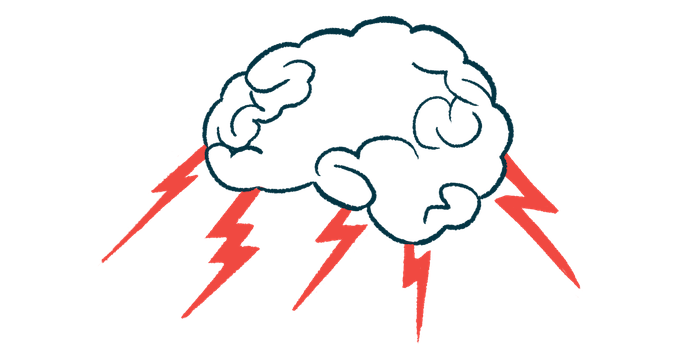Neurofeedback training set to ease seizures in girl, 8, with Dravet | In the first reported use, therapy was also seen to improve the patient’s sleep

Neurofeedback training – a way of training the brain to normalize its electrical signal patterns – led to reductions in seizures and improvements in sleep for a young girl with Dravet syndrome.
That’s according to a new case study, which was the first to report the use of this approach — officially called infra-low-frequency neurofeedback, or ILF-NFT — in a person with the epilepsy disorder.
“Our results show that ILF-NFT improved the patient’s sleep disturbance, significantly reduced seizure frequency and severity, and reversed neurodevelopmental decline, with positive development in intellectual and motor skills,” the researchers wrote.
“Therefore, we draw attention to ILF-NFT as a promising intervention in addressing [Dravet syndrome] symptomatology,” they added.
The study, “Infra-low frequency neurofeedback training in Dravet syndrome: a case study” was published in Epilepsy behavior and reports.

Neurofeedback training aims to train the brain to regulate itself
In Dravet syndrome, the nerve cells are too electrically active, meaning they are ready to fire signals when they shouldn’t. These nerve calls can also be called hyperexcitable.
As a consequence, patients experience seizures as well as other symptoms, such as cognitive impairments, behavioral disturbances and sleep problems.
Neurofeedback training, or NFT, is a personalized approach that aims to train the brain to change its electrical activity in ways that make it better at self-regulating and functioning optimally.
Essentially, NFT involves a program that creates an audiovisual representation of a person’s electrical brain activity, which is captured by the electroencephalogram (EEG).
The patient passively watches this video, which changes when the brain fires in optimal ways compared to when it fires in ways associated with abnormal behavior. The visuals associated with normal brain firing are more rewarding to brain cells, and thus the brain learns from this feedback over time to adjust its patterns.
ILF-NFT is a form of NFT that specifically targets very low brain signaling frequencies.
Case reports and pilot studies over the past few decades have highlighted the potential benefits of various forms of NFT for conditions such as treatment-resistant epilepsy, depression and autism spectrum disorder.
In the new case report, the researchers described the first study of ILF-NFT in a person with Dravet syndrome.
The girl, now 8, had been diagnosed when she started having fever-triggered seizures at 5 months old. Over the next few years, her seizures evolved to be triggered not only by fever, but also by physical activity or sensory stimulation.
She also experienced sleep problems, and was awake 2-4 hours a night for five nights each week. Her cognitive and motor skills gradually declined, and she experienced symptoms of irritability and problems with impulse control.
A number of different anti-seizure drugs were tried, some of which led to significant side effects.

Dad trained to administer neurofeedback training
The patient was started on ILF-NFT in December 2019. During treatment, she was connected to the EEG machine for 30 minutes per session, while looking at the screen and wearing headphones. She continued to use her anti-seizure medications.
The overall goal of the girl’s special neurofeedback regimen, given through July 2021, was to calm and stabilize certain frequencies of brain activity.
Her father was trained to administer the protocol, and the necessary equipment was set up in the girl’s home.
“The girl has, with few exceptions, exercised daily since then,” the researchers wrote.
After the first sessions in 2019, a marked improvement in the girl’s sleep was reported.
“Night time awakenings are now both rare and significantly shorter,” the team wrote, noting that the girl slept steadily from 7 p.m. to 6 a.m. most nights.
Her seizures also stabilized until the summer of 2021, with episodes occurring once every 7-10 days. day, while they became shorter and less severe. She no longer required emergency treatment with diazepam, which had caused side effects of lethargy.
After July 2o21, a new ILF-NFT protocol was introduced, which added a goal of calming impulse control problems linked to activity in the brain’s prefrontal cortex.
With this protocol, the child’s seizure frequency was drastically reduced. At the time of the report, the girl had been seizure-free for 23 weeks, or almost six months. Even during a COVID-19 infection in January 2022, which was accompanied by a high fever, the girl did not have any seizures.
She is now able to attend school and has seen cognitive improvements – although she still does not meet appropriate cognitive thresholds for her age. She also now has good motor function. No side effects have been observed.
“She is happy and with a positive attitude towards life,” the researchers wrote.
Further research is warranted to examine the effect of ILF-NFT i [Dravet syndrome] in more controlled clinical contexts.
The researchers noticed that if ILF-NFT is not used for a few days, the girl will start to feel unwell, restless and have sleep problems, which will reverse after a single session.
Although it is not clear what will happen in the long term, “we anticipate that the use of ILF-NFT may be necessary to minimize her symptoms throughout her life,” the team wrote.
All recorded benefits from the treatment were reported by the patient’s family, and not by objective measures, the authors noted as a study limitation.
“Further research is warranted to investigate the effects of ILF-NFT i [Dravet syndrome] in more controlled clinical settings,” the team concluded.
























